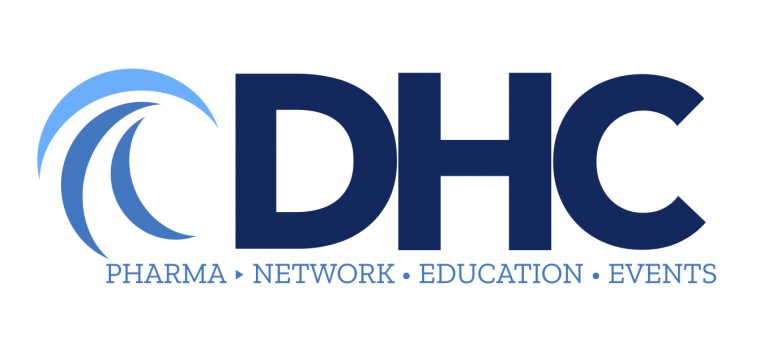Pharma Gets Experimental. Will You?A Summary of Insights from DPE 2019
By Clare Kirlin, Marketing Director, meltmedia

4 Areas Where Pharma Gets Experimental
“Scientific innovation is not enough – the commercial model must innovate to match.” —Lisa French, associate vice president, U.S. strategy and commercial model innovation, Merck
As R&D teams innovate in the lab, marketing teams are running trials of their own. Following the pharma industry’s embrace of marketing technology, brands are beginning to experiment with core business practices to further speed digital transformation.
Experimentation was a key theme at the 2019 Digital Pharma East (DPE) conference. Speakers from leading pharmas like GlaxoSmithKline, Bristol-Myers Squibb, AbbVie, and Lilly highlighted their efforts to test new tactics throughout the commercialization process.
No matter where you are in the digital transformation journey, it’s useful to consider how these innovations could apply to your business. Below, I explore four areas where pharma gets experimental in unprecedented ways for our industry. Each section includes suggested discussion prompts for your team. These prompts are thought experiments that can serve as a starting line for greater experimentation in your organization.
1. Operating Models
Rigid organizational structures are slowing pharma down. Teams that recognize the need to respond to rapidly fluctuating conditions in real time are testing new operational models designed to improve collaboration and adaptability.
Matt Lasmanis, vice president of technology and CIO at GlaxoSmithKline, spoke to the need for fluidity. Fluid organizations, he said, can better accommodate changing requirements and priorities. He revealed one way GlaxoSmithKline is becoming more fluid: “We took the operating model and turned it on its head.” The company refocused its devops groups by software product, with shared services to support recurring needs. Lasmanis went on to advocate for product as the primary driver, stating that his teams are now focused on outcomes, not functions.
Marketers are also considering models that could improve accountability among stakeholders. What if legal and regulatory teams — historically perceived as roadblocks to marketing — were recast in the role of marketing enablement? Speakers at the DPE plenary panel discussion on customer engagement broached the idea of including marketing enablement KPIs for compliance teams. While compliance teams may (understandably) bristle at the idea, the industry is better positioned for disruption than ever. Don’t be surprised if such previously unthinkable ideas make their way to the main stage in coming years.
Questions for your team:
- In what three areas would greater organizational fluidity add the most value?
- Better collaboration with (which team?) could have a measurable impact within weeks.
- What competing KPIs, interests, and incentives cause the most conflict among teams?
2. Digital Centers of Excellence
Digital centers of excellence (CoEs) have emerged as an antidote to disjointed marketing ecosystems. The hypothesis: centralizing technology, strategy, and resources will improve efficiency and deliver a better omnichannel customer experience.
Some CoEs are established to bring a single product to market, while others are intended to be permanent. Most have a “shelf life of three to five years,” according to Lou Marcinczyk, head of multichannel capabilities at Bristol-Myers Squibb. He stressed the importance of CoEs building credibility with brands to achieve lasting impact. In his words, a CoE must “be better than the other options” available to brand teams. If brands perceive CoEs as reducing efficiency and autonomy, the great CoE experiment could fail.
Dan Gandor, director of U.S. customer experience for oncology and virology at AbbVie, was also mindful of sustaining CoEs’ impact. He emphasized the importance of sharing results throughout the organization to justify additional investment. Whether it’s a temporary or long-term effort, Gandor noted, a CoE can serve as “a catalyst that creates lasting elements through policies and procedures, improving results through experiments, and upskilling other teams.” But it must continuously prove its value.
Questions for your team:
- What three organizational goals could digital centralization accelerate?
- How would each stakeholder benefit from and object to centralization? (R&D, commercial, patient, legal, etc.)
- How would we define and quantify “excellence” in digital?
3. Budgets
Plenty of companies pay lip service to innovation. A few are now making it a budget line item. These initiatives go beyond now-familiar experiments run by marketing teams (think A/B testing) and take the form of incubators, accelerators, and entrepreneurial hubs with the sole objective of discovering better ways to do business.
How can marketers make the case for dedicated experimental funds in a way that resonates with senior management? “You’re not always asking for more,” said Lou Marcinczyk of Bristol-Myers Squibb. “It’s about finding better ways to do things that increase efficiency so you can re-invest in projects you’re [already] working [on].”
When it comes to budgets, it’s easier to justify additional investment in functions that have already proven their ability to drive impact; this is especially true of experimental funds that may radically transform the business — or yield negative returns. Still, budgets are being allocated to test innovation in initiatives as broad as trial recruitment, human resources, and digital health tools. As market leaders prove that new models can more effectively meet productivity and growth goals, expect more pharma dollars to be earmarked for experimentation.
Questions for your team:
- What hypothesis could we prove with dedicated investment?
- Which areas of the business are best poised for disruption?
- How could marketing replicate successful experiments in other parts of the organization?
4. Experimentation as Culture
Each of the previous examples generates a concrete deliverable, but pharmas are also embracing experimentation at the cultural level. Taking a cue from the software industry, pharmas are operationalizing agile methodologies and reframing experimentation as a strategic imperative.
Switching to agile methodology can be “very disruptive,” warns Lisa French, associate vice president, U.S. strategy and commercial model innovation at Merck. Her advice: “Don’t underestimate the organizational mindset and skillset shift” required to adopt new methodologies. Teams driving cultural change must manage it carefully. French urged a thoughtful, strategic approach.
Lina Shields, chief media officer of Lilly USA, described her organization’s journey to cultural innovation: “We migrated from a test-and-learn mentality to a constant learning mentality.” Brands are armed with more data than ever, but the competitive advantage will go to those that transform their data into insight — and leverage that insight on a constant basis. Shields shared a case study to demonstrate how this mindset helped Lilly win market share for its blockbuster therapy Cialis, against the odds.
Questions for your team:
- What role does experimentation play in our organizational vision?
- Which agile principles could boost our productivity? Which would be hardest to adopt?
- How can we change daily workflow (meetings, reports) to promote a learning mindset?
Imagine, Test, Repeat
Experimentation isn’t a buzzword. It’s a deliberate and repetitive process designed to validate hypotheses with data.
Experiments are the bridge between innovative ideas and real-world implementation. They belong in the R&D lab, and — as speakers at Digital Pharma East demonstrated — they belong outside R&D, too. For its part, marketing is becoming a lab of its own.
As our industry peers experiment with new business approaches, we can all benefit by emulating their innovation. Mel Halkyard, vice president of product development and marketing at Precision Xtract, perfectly captured the spirit of experimentation that’s transforming pharma: “The question is not ‘Can we do it?’ It’s ‘How can we do it?’”
It’s a question worth our industry’s attention.
